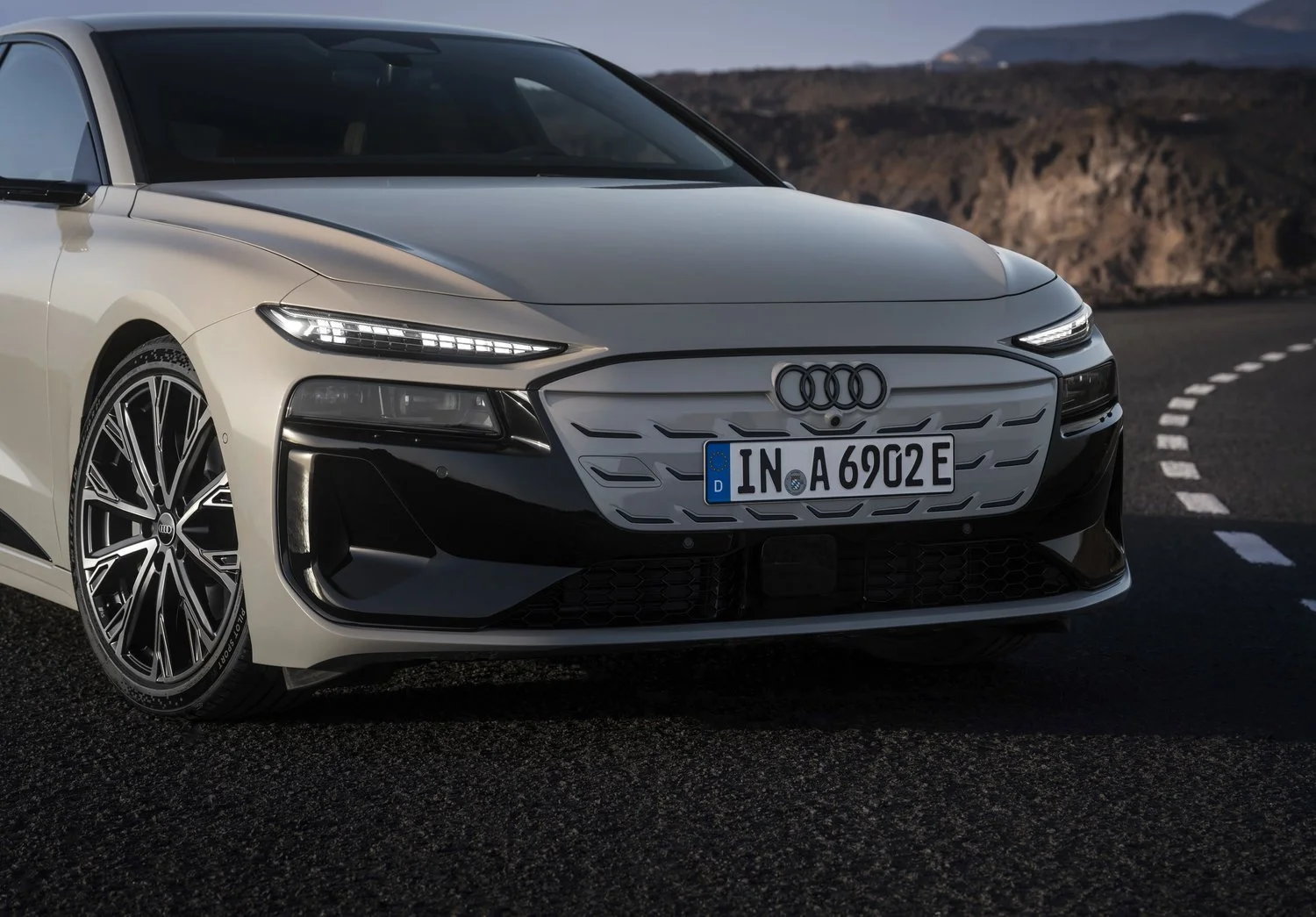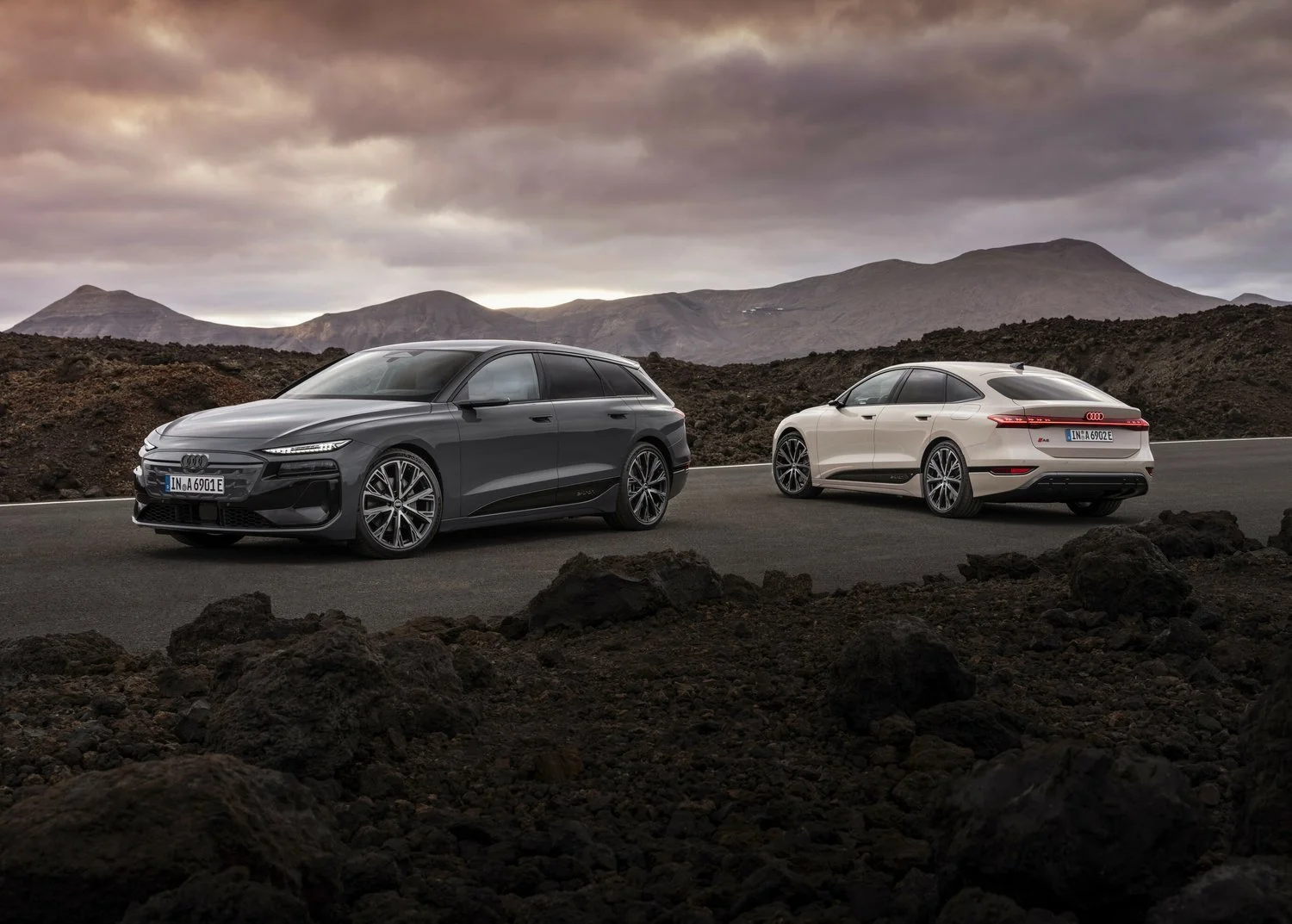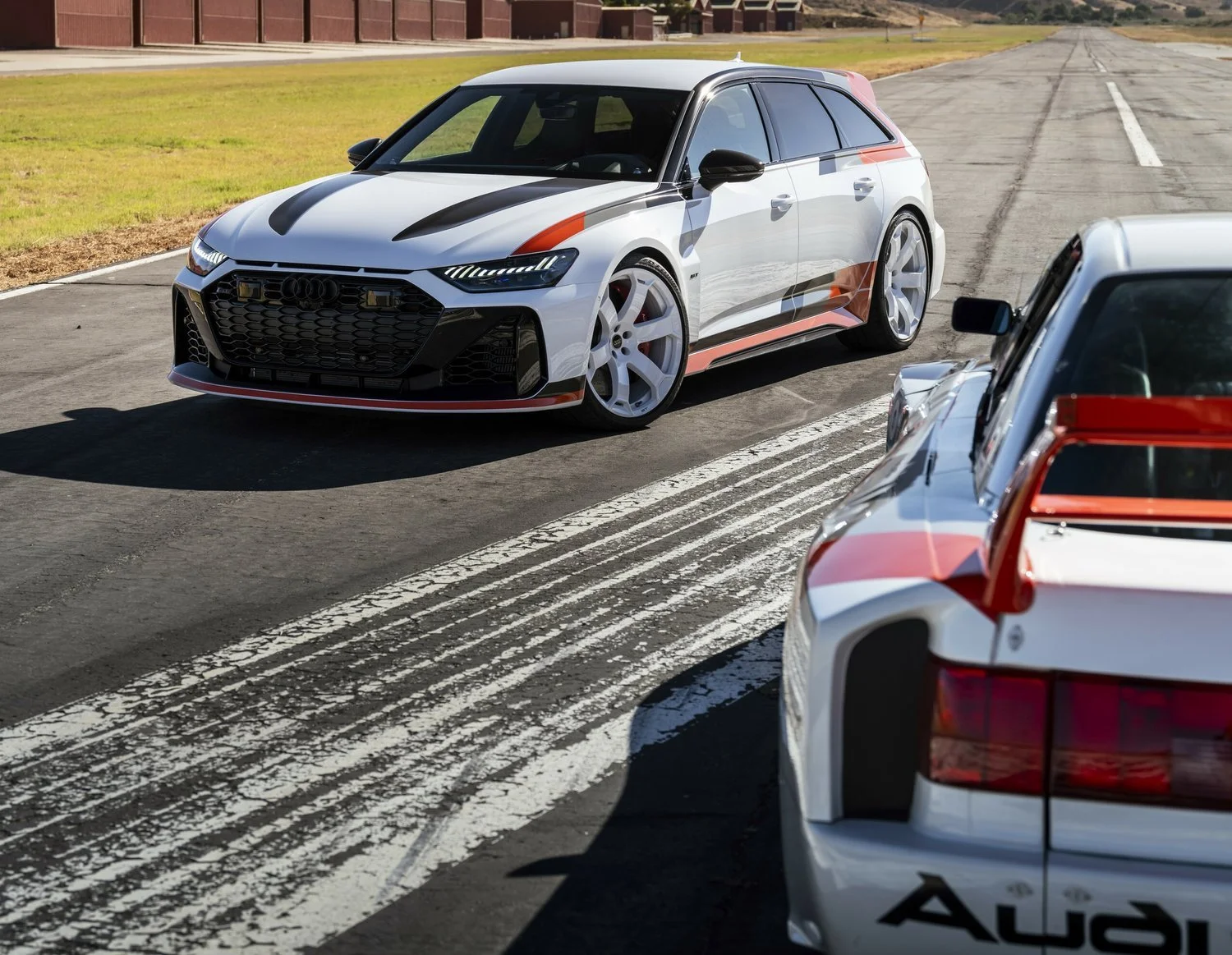August 8, 2024
A5, A6 and Q6 to kick off huge Audi NZ model refresh
Richard Bosselman
Eighty percent of current Audi offering is set for refreshment or replacement between now and end of 2026, with 15 new choices coming.
UNCERTAINTY about when tough market conditions for electric will ease hasn’t deterred Audi NZ from intent to reset its current line, with 15 fresh choices - most wed in some way to batteries - coming over the next 24 months.
An onslaught that will affect 80 percent of exisiting models has announced to media at Audi Ice Experience, an annual event at the Southern Hemisphere Proving Ground in its 15th year.
Ingolstadt has recently signalled combustion engines might linger for longer than it intended, having adjusted, as rivals have also done, electrification strategies in response to flatlining demand for premium electric cars.
Yet it seems battery-involved product will remain high profile over the next two years though, if predicted international trend reflects here, expect more hybrids, at least in the mainstream fare.
The programme kicks off early next year with three cars - the petrol-reliant A5 sedan (below) and Avant wagon then soon after the conjoined road-tuned A6/S6 Sportback and Avant and higher-riding Q6 Avant.
Those full electric debut the new Premium Platform Electric (PPE) with common rear-drive and all-wheel-drive drivetrain choices.
The A5s replace the A4 (the designation change because, now, even numbered cars are electric and odd have combustion ingredient). In turn, there will in time be A7s that ICE equivalent A6s.
A5 and A6 pricing has yet to be shared. The Q6, though all-terrain-themed, will provide here in Advanced 225kW rear-drive at $134,990 as an alternate to the 285kW S-Line Quattro for $155,990. The RS performance division will ultimately deliver versions of both.
The A5 seems set to show in Avant and fastback sedan and in addition to 2.0-litre four-cylinder petrols editions will be a S5, with a 3.0-litre petrol V6.
The latter is a temporary flagship, likely be joined within a year by the new Audi RS5 – a replacement for the RS4 that was among choices for ice driving.
Due on European sale next year, the RS5 is Audi Sport’s first plug-in hybrid, combining that petrol V6 with a rear-mounted EV motor, four-wheel drive and more than 328kW.
The A6 and Q6 (below) will raise the make’s electric delivery but announcement comes when interest in new EVs is down 73 percent against last year’s sector performance.
This has not shaken Audi NZ’s confidence in the technology.
National general manager Greg Leet says while he dare not predicts when the doldrum will end, electric is his make’s future and the market will inevitably turn around.
“We're an ambitious bunch … we’ve got a really ambitious vision or mission, whatever you want to call it, and a road map. What's critically important clearly is that we've got product to back that up.
“You will see an incredible product portfolio coming you way. You will see the brand come to life in a slightly different way than you've seen it before.
“And while we operate in a very difficult market (today), it won't be forever.
“So … we are ensuring that those foundations are set so that when we can start capitalising on that, we'll be absolutely best place for it.”
At present, the high-end EV corner is feeling big pain, he agrees.
Registrations of all Audi’s cars are suffering, but the electrics year to date appear to have shown greatest decline on their performances in 2023.
The latest addition to the family, the Q4 e-tron that landed last year, is Audi’s cheapest electric and best performer this year, but since January 1 has added only 58 registrations to its overall 166 unit count.
The e-tron GT and Q8 e-tron are next, with 29 and 28 units out of overall tallies of 143 and 35.
The original e-tron SUV that has served longest has the biggest overall penetration, with 478 registered, but only six of those have so far plated this year.
The sudden consumer u-turn on EV interest at all price levels is cited as a big reason, but Audi accepts that owner experiences with its priciest cars have been affected by other factors.
All elite battery products utilities large high energy batteries that do best with ultra fast charging, whose provision here is limited.
The RS GT e-tron also front and centre for the ice-driving that at $280,000 is not only the most expensive Audi here but also - with 440kW/830Nm - the most powerful, is typical of these that relish optimal 300kW charging. The A6 and Q6 are set to be in the same camp.
However, NZ has just a handful of those DC hyper chargers in the North Island and just one serving the South. Without those, the fallback are 50kW-70kWh chargers that require a much longer replenishment downtime, a frustration for those who want to roam far and charge frequently and fast.
Also clouding the EV experience in general are poor residuals. That electrics in all price levels are subject to faster depreciation over comparable internal combustion product seems a galling reality.
This, plus the concern - often utterly unfounded - about the integrity of batteries has seen some EVs being refused as trades.
Audi NZ does not believe any of those factors are grounds for owners having second thoughts. The majority of e-tron owners remain loyal to the technology, Leet says. There is solid evidence to support that once buyers commit to electric, they stay committed, with no intention of ever going back to ICE.
Audi will play to that over the next couple of years.
"We all know it's tough times … this transition I suppose, or rebalancing or resetting if you like, of electric cars.
“It is a resetting (but) it is not a disappearance of.
“While the market's changing, we're definitely going through a rebalance. We are just the same as every other manufacturer.”
Even though e-tron pricing was never tailored to take advantage of the previous Government’s rebate on up-to-$80,000 EVs, the scheme’s end-of-2023 curtailment - and potentially EVs and plug-in electrics being subject to Road User Charges from April 1 - has clearly been as damaging to EV transition as the general economic climate change.
The abruptness and extent of the swing simply stunned sellers.
“The market has gone into a position that nobody really expected it would go into and it happened really fast,” he said.
“Since the Government changed the subsidies so quickly, it has made a difference.”
Audi NZ has resisted being among the many distributors that have decided to divest excess stock with selling it off for sometimes massive discounts, however it will soon have a promotion in place to generate interest in some model lines.
This is undoubtedly the best time to buy an EV because “the deals are absolutely incredible. everyone can see it.”
Leet says the fact is that the process of ordering, building and shipping cars takes significant time, particularly for European brands.
“Sometimes when things change very quickly, it (the local industry) is a little slower to react The industry has found itself awash with electric cars.
“By no means does that mean customers are jumping out of those cars. Customers are continually trading up to the newer models of EVs and I think people that have experienced electric cars before continue to be electric car drivers.”
Stock caught out by the slump would have been signed off on up to a year before it even landed, with volume decisions being made when a different political agenda was in play.
The prioritisation of electric under the previous Government was plain; now there were still penalties for not having them, but buyer perception has changed.
He believes it’s just a lull - the world’s automakers are still weaning from ICE and electric is their primary preference; that’s certainly the case with Audi.
So, while there’s reluctance to give a volume forecast for the A6 and Q6 e-trons, he feels they will be important products here.
While the provision of those products in rear-drive is deemed important, because they are the price leaders and have strongest range, he says Audi’s status here is very firmly built on being a performance all-wheel-drive marque.
“The difference with Audi is that we've still got quattro and Audi Sport … we have RS cars that are electric and RS cars that are ICE.
“We are a brand that has ICE cars. We're a brand that has electric cars. But what's clearly important and that will continue to be core for us, is that while 80 percent of what we sell sits in performance Quattro, it will be made up of ICE and electric cars.”
Buyers could pick one or the other, witch best suited their means, and be assured they were getting a common driving experience.
“With some manufacturers, there will be an electric car strategy and an ICE car strategy. We've got two drivetrains spread across all of our models. You can choose.”
BMW and Mercedes Benz have also signalled changes to their own EV rollout programmes and suggested intent to refine product lines to implement more hybrids, mild and plug-in. Audi seems to be in the same mind, but it won’t abdicate e-tron.
At same token, Leet suggests, it could now be “quite some time before we'll be in a position where customers won't have a choice.”
However it plays utility, be assured the Kiwi love of the RS product won’t ever be dismissed.
“We first and foremost try to align our product to ensuring that it suits the market,” says Leet.
“So that's our number one priority. We are takers of technology, we don't build the cars. First and foremost, we know that New Zealand is very supportive of Audi RS product.”
RS take-up being is globally highest per capita has paid off for Audi NZ. Last night sales and product planning manager Ina Economopoulos announced 13 examples of the limited count, part hand-built special edition GT version of the RS6 Avant (below) are incoming. That’s three more than Japan, and just nine fewer than Australia. This last blast version of the V8 car is a sought after choice and all the NZ-bound stock has been spoken for.






